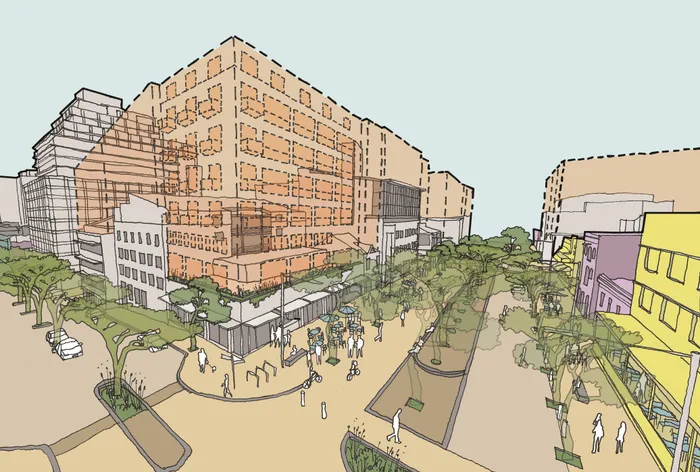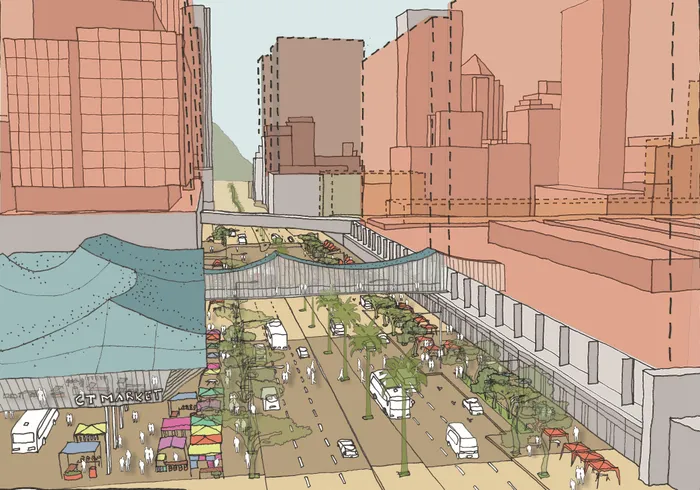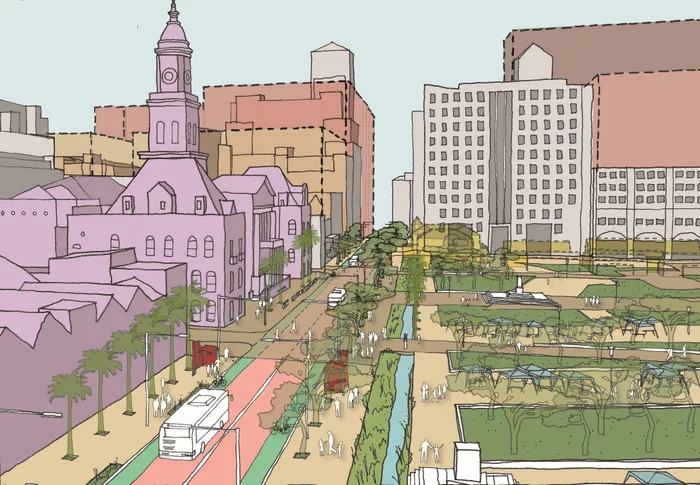Have your say on plans for CBD
Residents and businesses invited to shape the future of Cape Town's CBD by commenting on the draft spatial plan

The draft LSDF intends to transform the Cape Town CBD into a more people-centred environment with urban design interventions to improve mobility and access for pedestrians, efforts to optimise heritage areas, and improving the public realm with interventions along Long, Loop, and Bree Street.
Image: City of Cape Town
The City of Cape Town invites residents, the business community and all stakeholders to comment on the draft local spatial development framework (LSDF) for the Cape Town CBD.
The comment period will close on Sunday May 11.
The framework encapsulates the City’s vision for the CBD’s future growth and will guide decisions about land use and development, density, the public realm (including streets), and urban design.
"The LSDF intends to transform the CBD into a more people-centred environment with urban design interventions to improve mobility and access for pedestrians, efforts to optimise heritage areas, a public land programme to inform land release in support of affordable housing opportunities, and an appropriately scaled urban form and interface to encourage mixed-use intensification," said City’s deputy mayor and mayoral committee member for spatial planning and environment, Eddie Andrews. "With mixed use, we mean development that accommodates multiple uses such as business, retail, and residential opportunities for existing and new buildings.

Included in the plan is a pedestrian link over Strand Street.
Image: city
"We need the CBD to be accessible, safe, attractive, and inclusive. The LSDF must guide development decisions to accommodate the growth in the property market, facilitate mixed-use and residential intensification, while leveraging the character and traditional urban fabric opportunities."
Once approved, it will also inform public investment in infrastructure to ensure that the CBD transitions into a more sustainable, equitable, inclusive, liveable and resilient space to the benefit of current and future generations of Capetonians.
A statement by the City of Cape Town said it was estimated that the CBD will have to provide residential opportunities to an additional 50 000 people by 2040. This projected demand translates into a specific urban form that needs to be managed through spatial and land use policy and regulation.
The LSDF intends to assist in land use regulatory improvements to facilitate development while providing guidelines to protect heritage resources. This includes height benefits in exchange for residential units and public realm improvements and investments.
Additionally, access to and from the CBD from the rest of Cape Town is also poor. Restoring passenger rail as the backbone of public transport is key. The CBD is also still dominated by vehicles, and interventions were needed to create a more pedestrian-friendly environment, as well as public spaces with greening to give workers and residents relief and escape from the urban environment.
The draft LSDF elaborates on the spatial constraints and opportunities, upgrade of public open spaces and the creation of new green areas in the vicinity of the Foreshore, for example.
As for the public realm, the LSDF proposes a pedestrian-friendly CBD that links Table Mountain with the Atlantic ocean through key public spaces, each with their own identity, and more green recreation spaces; the upgrade of squares such as the Grand Parade, Civic Square, Riebeeck Square, Greenmarket Square, and Harrington Square, which is currently the focus of a feasibility study.
The LSDF also looks into nodal character areas, or places which contribute to the unique sense of place and in some instances, include important heritage assets. To rationalise the heritage protection overlay zone, the LSDF identifies enclaves of existing historic building fabric to be retained and enhanced, and where detailed heritage management provisions are to be developed for inclusion in the Development Management Scheme.
According to the City of Cape Town, the first draft LSDF was made available for public comment in September and October last year. The comments received during this period have been used to further refine the LSDF, including the implementation plan, which consists of programmes, projects, and actions to be implemented by various City departments with support from the private sector and other inter-governmental stakeholders in various priority precincts within the CBD.
A Mobility and Access Plan specifically designed for the CBD is in its formative stage and will be shared as an annexure to the draft LSDF for a first round of public comment.

Included in the draft Implementation Plan is the proposal to develop a concept vision for the Grand Parade, including uniform formal trading market structures; linkages to Darling and Hanover Streets, and the Castle.
Image: City of Cape Town
The study area for the LSDF is the core economic area of the CBD, bounded by Helen Suzman Drive/FW de Klerk Boulevard to the north, Nelson Mandela Drive and Sir Lowry Road to the east, Mill Street/Orange Street to the south, and Buitengracht Street to the west.
The study area is divided into eight precincts, including De Waterkant, Convention District, Mid-City, Company Garden, East Foreshore, Cape Town Station, East City and Lower Gardens. The draft LSDF provides development guidelines for each precinct in terms of its urban form, approach towards height management, and character assessment.
The draft LSDF proposes an implementation framework for priority precincts and a programme of action for City departments to implement over the short-, medium-, and long-term. This includes public investment priorities on public transport, roads, and non-motorised transport to improve mobility; upgrades to public squares and streetscapes; and proposed projects to ensure the CBD’s appeal as a tourist and investment destination, amongst others.
Some of the short-term plans proposed by the City include:
- Improving the public realm from the Cape Town station to Dock Road/V&A Waterfront with interventions along Long, Loop, and Bree Street and Buitengracht
- Transforming Harrington Square to improve the public realm
- Developing a concept vision for the Grand Parade, including uniform formal trading market structures; linkages to Darling and Hanover Streets, and the Castle; as well as a pedestrian link over Strand Street;
- Upgrading the outdoor gym at Kamp Street, opposite De Waal Park
- Upgrading of Jutland Park to include pathways and a park for dogs
- Upgrading of Long Street swimming pool
- Expanding the Chapel Street Clinic
Residents are also encouraged to join information sessions, which will take place online on Tuesday April 15, from 2pm to 3pm; Thursday April 24, from 3pm to 5pm; and on Wednesday May 7, from 3pm to 5pm.
The links for information sessions, the LSDF and comment submissions will be available at www.capetown.gov.za/haveyoursay
"It is in everybody’s interest to get involved and contribute to the discussion. Your input matters, and we will take this into account as we finalise the draft LSDF for Council’s approval once the public participation process has been concluded," said Mr Andrews.